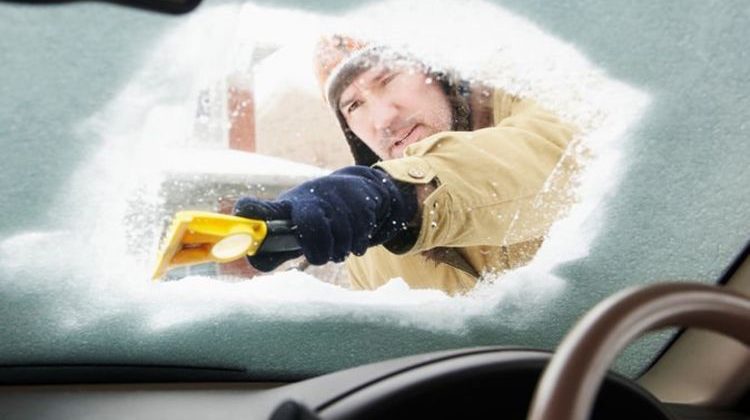Lincolnshire: Cyclist clashes with motorist over Highway Code
We use your sign-up to provide content in ways you’ve consented to and to improve our understanding of you. This may include adverts from us and 3rd parties based on our understanding. You can unsubscribe at any time. More info
Frost can leave car windows misty and hard to see through in the winter as the cold weather causes frozen layers and watery condensation. Getting rid of misted windows when you’re in a rush can seem like losing battle, but driving away before clearing your car properly could land you a hefty fine. Steamed up windows may seem minor, but they could land you in major trouble if un-cleared – and this is why.
Is it illegal to drive with steamed up windows?
An estimated half of Brits who have a car admit to driving with steamed-up windows.
While fogged up windows are hard to avoid during the colder months, demisting your vehicle before setting off is crucial to avoid road traffic accidents as a result of reduced vision.
According to the highway code, driving with misty windows could land you at risk of a fine of up to £1,000 and three points on your licence.
Under Rule 229 of the Highway Code, it states that: “Drivers must be able to see, so clear all snow and ice from all your windows… make sure that your mirrors are clear and the windows are demisted thoroughly.”
READ MORE: Hydrogen vehicles to play a ‘key role’ in future as investment grows


While it may seem fine to drive a short distance with steamed up windows, there are no circumstances under which this can be justified in the eyes of the law.
The Highway Code says properly demisting your windows will prevent you from being liable for failing to have proper control of the vehicle or full view of the road and traffic ahead.
The main purpose of this rule is to keep yourself and others safe while driving in adverse weather conditions like snow or fog.
Getting rid of frost and mist completely before you drive away can be time-consuming on a busy morning, but how can you quickly tackle foggy car windows?
Get the latest three-day weather forecast where you live. Find out by adding your postcode or visit InYourArea
How to quickly demist your car windows
Car windows can become foggy when moist air comes into contact with cold glass.
Body warmth can quickly increase the temperature within your car and increase the amount of moisture in the air, contributing to foggy condensation of your windshield and other windows.
There are many ways to clear misty windows but controlling the temperature of your car is the most crucial step to melting away ice and frost.
DON’T MISS:
Man angry about hidden traffic camera he stops drivers getting fined [REPORT]
Nicholas Latifi responds after mistake influenced last-lap F1 drama [LATEST]
Ferrari outline Hamilton and Verstappen concerns as Sainz gets podium [INSIGHT]

Use gradual heat
Blasting the heater on its highest setting may seem effective but a more gradual approach will actually speed up the process.
Start with a cooler heat setting and gently increase the dial as the air dries out to avoid overloading the car with hot, moist air.
Use your car controls to direct the air towards the windscreen and windows wait for around five minutes to see a real difference.
As the heat warms up it will dry the glass while heating. This will prevent water vapour from condensing on the surface again.
Combine air conditioning with heat
If your car has air conditioning it is a good idea to use this in conjunction with your internal heater to speed up the demisting process.
While the heat dries the surface of the glass, the cold air can quickly cause the temperature of the glass to cool down again and trigger more condensation.
Keep the air conditioning on while heating the car in order to balance the warmth and moisture levels in the air.
Crack open a window
Leaving your window down just a few inches will balance the excess warmth from the heater and prevent excess moisture from gathering in the car.
Source: Read Full Article
